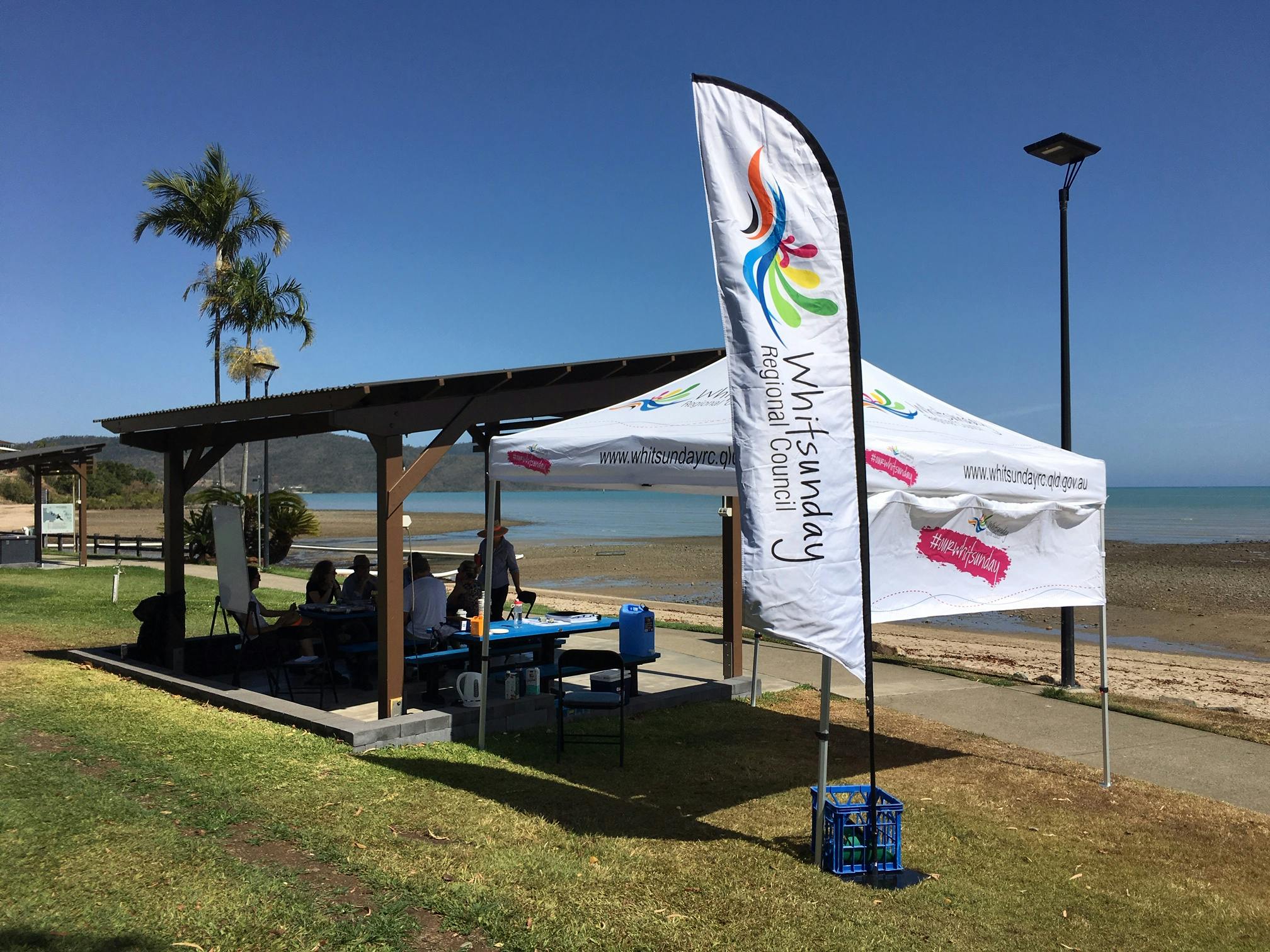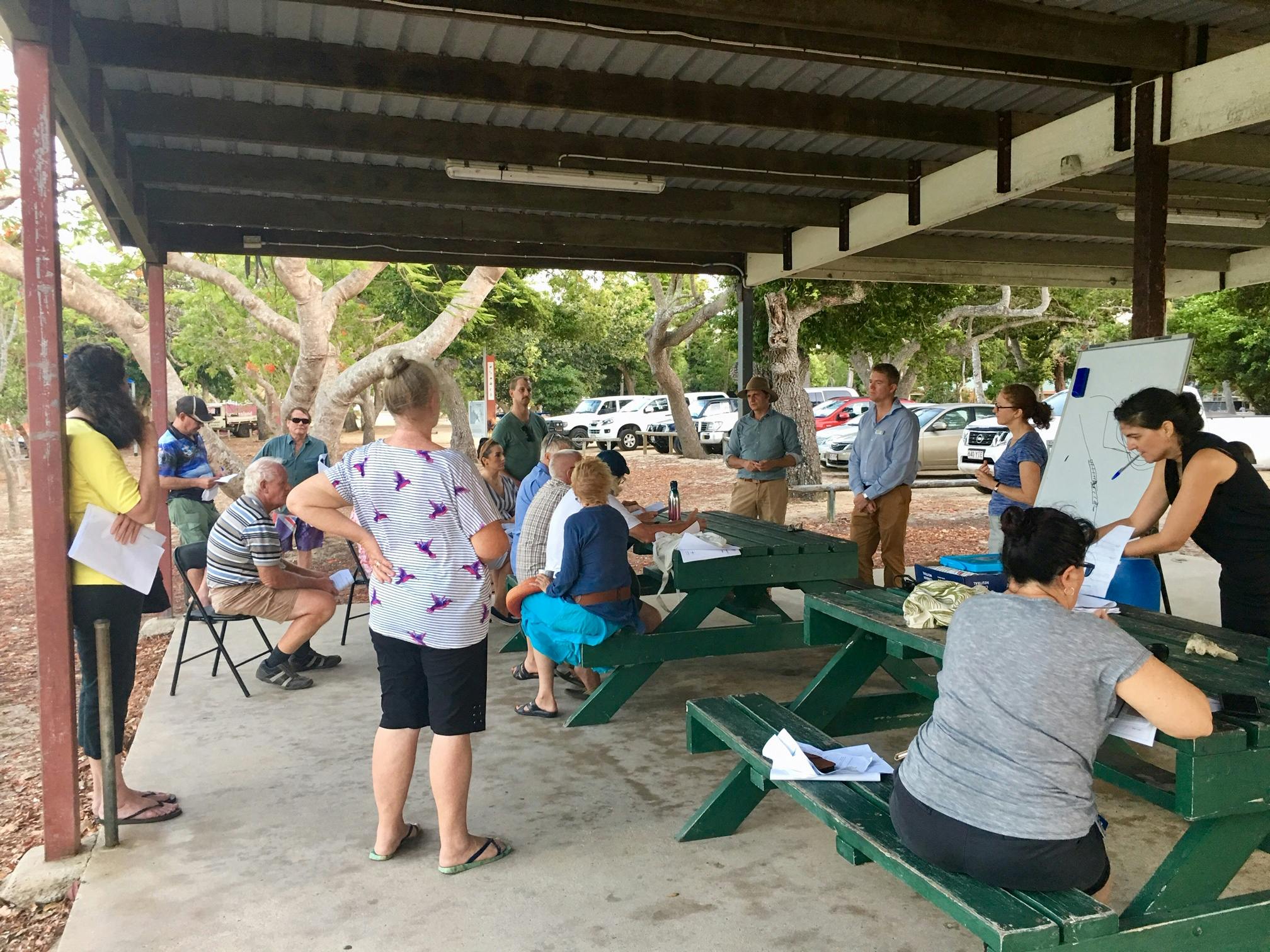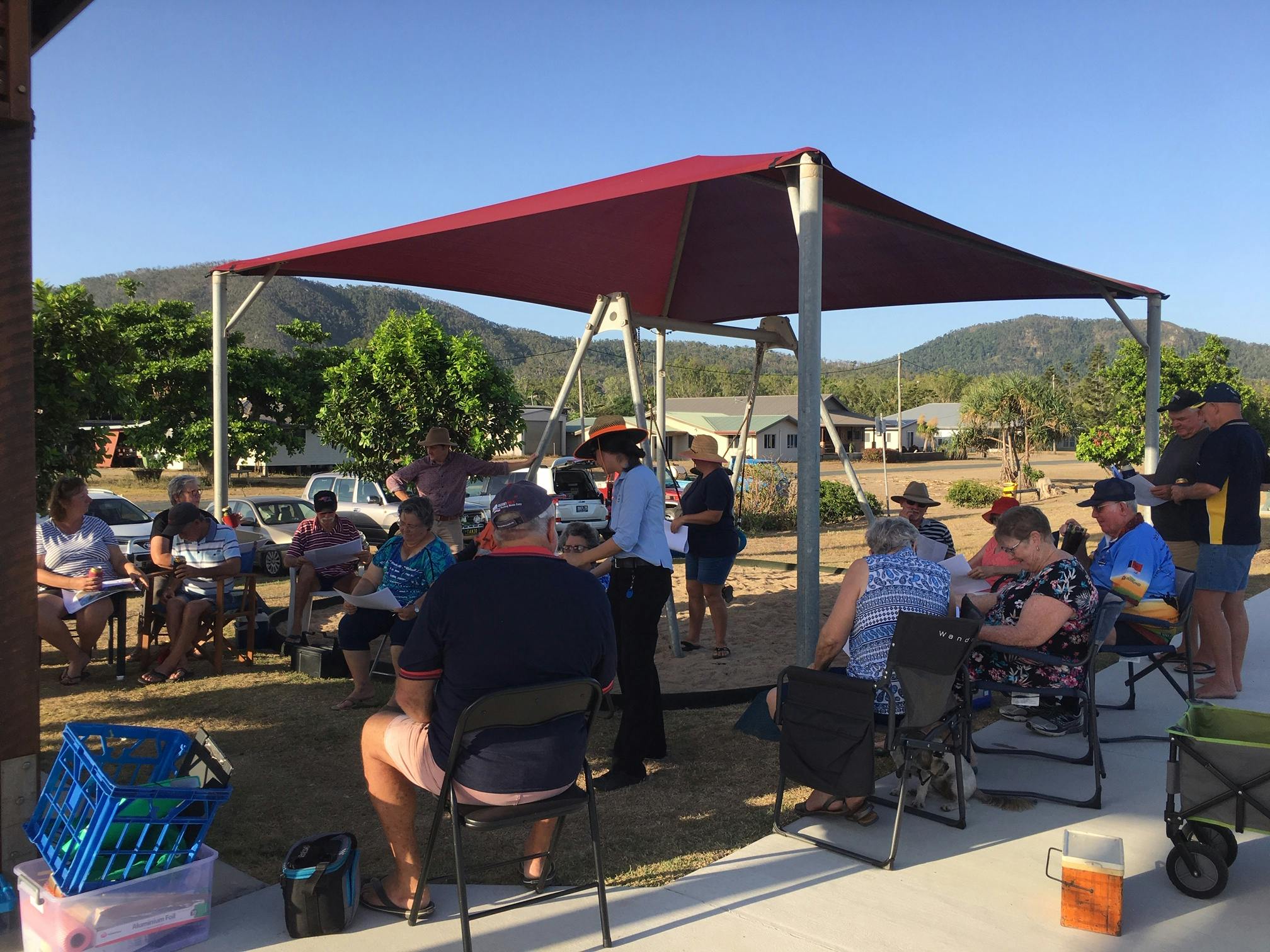Coastal Hazards Adaptation Strategy

Thank you for your interest. Consultation has concluded.
We have developed a draft Coastal Hazard Adaptation Strategy (CHAS), which outlines our plan for predicted future sea level rise in our coastal communities. With over 500km of coastline, the Whitsunday region and its residents are vulnerable to the long-term impacts of climate change.
The CHAS studies have found that by 2100 almost 590 residential dwellings in the region will be impacted by an increase of 80cm in sea level over the next 80 years. The sea level rise will also impact roads and underground water and sewage infrastructure.
The CHAS outlines a range of adaptation options to address these risks in each coastal community and how these options could be funded.
34 scientific studies were completed over the past five years, including the development of up-to-date mapping which shows predicted levels of sea inundation and storm surge, available on Council’s online portal here.
The CHAS is partly funded by the Local Government Association of Queensland’s QCoast 2100 Program, along with 31 other coastal councils across Queensland.
The CHAS was adopted at the Council Meeting on 28 July 2021 and the final version is available to view on our website:
We recently consulted on the draft Coastal Hazard Adaptation Strategy and asked for your feedback. Below is a summary of this feedback, which you can view or download here

Thank you for your interest. Consultation has concluded.
We have developed a draft Coastal Hazard Adaptation Strategy (CHAS), which outlines our plan for predicted future sea level rise in our coastal communities. With over 500km of coastline, the Whitsunday region and its residents are vulnerable to the long-term impacts of climate change.
The CHAS studies have found that by 2100 almost 590 residential dwellings in the region will be impacted by an increase of 80cm in sea level over the next 80 years. The sea level rise will also impact roads and underground water and sewage infrastructure.
The CHAS outlines a range of adaptation options to address these risks in each coastal community and how these options could be funded.
34 scientific studies were completed over the past five years, including the development of up-to-date mapping which shows predicted levels of sea inundation and storm surge, available on Council’s online portal here.
The CHAS is partly funded by the Local Government Association of Queensland’s QCoast 2100 Program, along with 31 other coastal councils across Queensland.
The CHAS was adopted at the Council Meeting on 28 July 2021 and the final version is available to view on our website:
We recently consulted on the draft Coastal Hazard Adaptation Strategy and asked for your feedback. Below is a summary of this feedback, which you can view or download here

-
Strategy prepares Whitsundays for coastal hazards in the future
Share Strategy prepares Whitsundays for coastal hazards in the future on Facebook Share Strategy prepares Whitsundays for coastal hazards in the future on Twitter Share Strategy prepares Whitsundays for coastal hazards in the future on Linkedin Email Strategy prepares Whitsundays for coastal hazards in the future linkA Coastal Hazard Adaptation Strategy (CHAS) was adopted at the Whitsunday Regional Council Meeting this week, which outlines a plan for predicted future sea level rise in the region’s coastal communities.
According to the Queensland Government and climate scientists, by 2100 it is predicted there will be an increase of 80cm in sea level over the next 80 years.
The CHAS outlines a range of options to address the risks from sea level rise and storm surge in each coastal community and how these options could be funded.
Whitsunday Regional Council Mayor Andrew Willcox said Council is taking a proactive approach and had recently presented the draft Strategy document for community feedback.
“With over 500km of coastline, the Whitsunday region and its residents are vulnerable to the long-term impacts of climate change,” he said.
“We can also expect coastal hazards to impact roads and underground water and sewage infrastructure.”
“We began developing this project in 2016 and have consulted with residents in coastal communities at different stages along the way.”
The CHAS will be reviewed in five years to ensure it is up-to-date with the latest scientific information and community expectations.
34 scientific studies were completed over the past five years, including the development of mapping which shows predicted levels of sea inundation and storm surge, available on Council’s website.
The CHAS is funded by the Local Government Association of Queensland’s QCoast 2100 Program, along with 31 other coastal councils across Queensland.
Further information about the CHAS and its development can be found on our website Your Say Whitsunday - https://yoursay.whitsundayrc.qld.gov.au/climate-change-project
To view the coastal hazard mapping, visit Council’s online portal - https://bit.ly/3zDuZad
-
Community Consultation - Draft CHAS 2021
Share Community Consultation - Draft CHAS 2021 on Facebook Share Community Consultation - Draft CHAS 2021 on Twitter Share Community Consultation - Draft CHAS 2021 on Linkedin Email Community Consultation - Draft CHAS 2021 linkIn May 2021, we consulted with residents across the region on the draft Coastal Hazards Adaptation Strategy.
The document and studies which underpin it have been developed over the past five years as the 'Resilient Whitsundays: Coastal Hazards Adaptation Strategy Project'. This project identifies which areas and key assets are at risk from coastal hazard in the Whitsunday Region and how we can respond to these challenges.
We asked for feedback from coastal communities who are most at risk from coastal hazards, and developed mapping and factsheets for these areas. Public displays were held across the region in some of these coastal communities during May 2021.
The draft CHAS was developed using feedback we gathered during previous rounds of community consultation over the past five years (more information below).
All feedback will be considered and the final document will be presented to Council at an upcoming Meeting.
-
Coastal Conversations - December 2019
Share Coastal Conversations - December 2019 on Facebook Share Coastal Conversations - December 2019 on Twitter Share Coastal Conversations - December 2019 on Linkedin Email Coastal Conversations - December 2019 linkIn December 2019, Whitsunday Regional Council held a series of community consultation workshops across the region’s coastal communities, as part of the Coastal Hazards and Responses Project under the Coastal Hazards Adaptation Strategy (CHAS).One of the key activities under the Project and CHAS is to engage the community, raising the awareness of climate change impacts and describing the range of climate change adaptation options.The small coastal communities in the Whitsunday region were identified as being the most at risk and so workshops were held in each location to ensure residents had the opportunity to participate. The workshops were held over three days in early December 2019, with two workshops per day. The locations chosen were Wilsons Beach, Conway Beach, Cannonvale Beach, Queens Beach in Bowen, Hydeaway Bay and Dingo Beach.Council staff received very positive responses to the workshops in all locations, and the sessions generated good engagement and conversation regarding the options for the future.There were 82 participants who attended the consultation sessions and a total of 54 surveys submitted from across each location. The results show residents are concerned about the impacts of coastal erosion and storm surge, now and in the future.
-
Coastal Values Survey 2018
Share Coastal Values Survey 2018 on Facebook Share Coastal Values Survey 2018 on Twitter Share Coastal Values Survey 2018 on Linkedin Email Coastal Values Survey 2018 linkCouncil conducted a survey of members of the community and visitors in July 2018 to better understand how the region values our coastline.
The aim of the survey was to build a greater understanding of how important the coastline is to the people in the Whitsunday region, and identify the issues and concerns of the community.
A total of 215 responses were received both online and in person across the region. This information has been considered during the development of coastal hazard mapping and adaptation options.
-
Community workshops July 2017 - Historical Analysis
Share Community workshops July 2017 - Historical Analysis on Facebook Share Community workshops July 2017 - Historical Analysis on Twitter Share Community workshops July 2017 - Historical Analysis on Linkedin Email Community workshops July 2017 - Historical Analysis linkCouncil held two successful workshops in late July 2017, with presentations from Australian Heritage Specialists and Climate Planning. The workshops highlighted to the public the key notable weather events along the Whitsunday coastline, including cyclones, floods and droughts, dating from as far back as 1884.
Donovan Burton from Climate Planning discussed some of the key climatic trends and associated cascading impacts for the public, such as insurance and disaster management implications.
Members of the public were invited to view the visual displays showcasing climatic weather patterns, significant cyclones and floods experienced by coastal Whitsunday townships, ask questions and provide feedback to Council on the topics presented.
Whitsunday Regional Council will be looking at hosting further community presentations associated with the next phases of the Coastal Hazard Adaptation Strategy in the near future. These will be advertised here, on Facebook and in the newspaper.
You can view the photos and videos submitted by the community below under 'Latest News'.
-
Submission by Felicity Chapman - Cyclone Ului
Share Submission by Felicity Chapman - Cyclone Ului on Facebook Share Submission by Felicity Chapman - Cyclone Ului on Twitter Share Submission by Felicity Chapman - Cyclone Ului on Linkedin Email Submission by Felicity Chapman - Cyclone Ului link



Tropical Cyclone Ului 2010 - Living in Jubilee Pocket we only lost vegetation. It was a different story near the water with the amount of boats washed up onto the shore.
-
Submission by Jan Clifford - Cyclone Debbie
Share Submission by Jan Clifford - Cyclone Debbie on Facebook Share Submission by Jan Clifford - Cyclone Debbie on Twitter Share Submission by Jan Clifford - Cyclone Debbie on Linkedin Email Submission by Jan Clifford - Cyclone Debbie link
Nemo survives Debbie!

Shute Harbour Motel after Cyclone Debbie.
-
Submission by Owen Fuller - Cyclone Ada
Share Submission by Owen Fuller - Cyclone Ada on Facebook Share Submission by Owen Fuller - Cyclone Ada on Twitter Share Submission by Owen Fuller - Cyclone Ada on Linkedin Email Submission by Owen Fuller - Cyclone Ada link

The photos attached are taken from footage taken by my brother Colin Fuller on 8mm film of Cyclone Ada. There are three videos that can be viewed online on youtube. At the time I was living in Proserpine, which experienced damaged homes, many with roofs taken down, and many power poles damaged or felled. News reporting at the time recorded Cyclone Ada as a Category 3 cyclone, however my thoughts are that it was at least a Category 4, especially given that the weather recording at the time was not as detailed as it is now. Ada came in via Funnel Bay, and the impact on the Cannonvale and Airlie Beach areas was severe, the Airlie Beach pub at the time was totally wrecked with the top section blown off into Muddy Bay (where the marina is now). Lots of boats were sunken and all the leaves stripped bare from trees around Airlie and Cannonvale. In comparison to Debbie my observations are that Ada was much more contained and moved a lot faster, where as Debbie covered a larger area and moved very slow.
-
Resilience in the Whitsundays
Share Resilience in the Whitsundays on Facebook Share Resilience in the Whitsundays on Twitter Share Resilience in the Whitsundays on Linkedin Email Resilience in the Whitsundays linkResilient Whitsundays: Coastal Hazards Adaptation Strategy
Council has received funding from the Local Government Association of Queensland (LGAQ) to deliver the ‘Resilient Whitsundays: Coastal Hazards Adaptation Strategy’ (CHAS).
This project will begin the important work of identifying which areas and key assets are at risk from coastal hazard in the Whitsunday region, and will develop potential options for responding to these challenges.
The project has eight key phases, which are as follows:
- Plan for Stakeholder communication and engagement
- Scope coastal hazard issues and undertake historical analysis
- Identify areas exposed to current and future coastal hazards
- Identify key assets potentially impacted
- Undertake a risk assessment of key assets in coastal hazard areas
- Identify potential adaptation options
- Undertake a socio-economic appraisal of adaptation options
- Strategy development, implementation and review
-
Council receives Highly Commended at the 2017 Australian Coastal Awards!
Share Council receives Highly Commended at the 2017 Australian Coastal Awards! on Facebook Share Council receives Highly Commended at the 2017 Australian Coastal Awards! on Twitter Share Council receives Highly Commended at the 2017 Australian Coastal Awards! on Linkedin Email Council receives Highly Commended at the 2017 Australian Coastal Awards! link
4 May 2017
Whitsunday Regional Council were recognized for their proactive approach to Climate Change with a Highly Commended award at the 2017 Australian Coastal Awards in Brisbane on 4 May 2017.
On hand to accept the award were Councillors Ron Petterson and Jan Clifford, Director of Community & Environment Julie Wright and Manager Health Environment and Climate Adam Folkers. The quartet all attended the Australian Coastal Councils Conference.
Key Dates
-
30 April → 28 May 2021
Photos
Life Cycle
-
Historical Analysis 2017
Coastal Hazards Adaptation Strategy has finished this stage -
Coastal Values survey 2018
Coastal Hazards Adaptation Strategy has finished this stage -
Coastal Conversations 2019
Coastal Hazards Adaptation Strategy has finished this stage -
Community Consultation 2021
Coastal Hazards Adaptation Strategy has finished this stage -
Under Review
Coastal Hazards Adaptation Strategy has finished this stageAll feedback will be considered while we finalise the CHAS and the results will be presented to Council at an upcoming meeting.
-
CHAS adopted by Council
Coastal Hazards Adaptation Strategy is currently at this stageThe CHAS was adopted by Council on 28 July 2021 and will be reviewed in five years time.
Photos
Document Library
-
 Consultation Summary - CHAS 2021.pdf (1.28 MB) (pdf)
Consultation Summary - CHAS 2021.pdf (1.28 MB) (pdf)
-
 Factsheets for each area
Factsheets for each area
-
 CHAS factsheet - Airlie Beach and Cannonvale.pdf (775 KB) (pdf)
CHAS factsheet - Airlie Beach and Cannonvale.pdf (775 KB) (pdf)
-
 CHAS factsheet - Bowen CBD.pdf (781 KB) (pdf)
CHAS factsheet - Bowen CBD.pdf (781 KB) (pdf)
-
 CHAS factsheet - Conway Beach.pdf (944 KB) (pdf)
CHAS factsheet - Conway Beach.pdf (944 KB) (pdf)
-
 CHAS factsheet - Dingo Beach.pdf (887 KB) (pdf)
CHAS factsheet - Dingo Beach.pdf (887 KB) (pdf)
-
 CHAS factsheet - Hydeaway Bay.pdf (851 KB) (pdf)
CHAS factsheet - Hydeaway Bay.pdf (851 KB) (pdf)
-
 CHAS factsheet - Queens Beach Bowen.pdf (773 KB) (pdf)
CHAS factsheet - Queens Beach Bowen.pdf (773 KB) (pdf)
-
 CHAS factsheet - Rose Bay.pdf (967 KB) (pdf)
CHAS factsheet - Rose Bay.pdf (967 KB) (pdf)
-
 CHAS factsheet - Wilsons Beach.pdf (792 KB) (pdf)
CHAS factsheet - Wilsons Beach.pdf (792 KB) (pdf)
-
-
 Mapping for each area
Mapping for each area
-
 Airlie Beach-Cannonvale - Permanent Inundation 2100.pdf (844 KB) (pdf)
Airlie Beach-Cannonvale - Permanent Inundation 2100.pdf (844 KB) (pdf)
-
 Airlie Beach - Permanent Inundation 2100.pdf (763 KB) (pdf)
Airlie Beach - Permanent Inundation 2100.pdf (763 KB) (pdf)
-
 Cannonvale - Permanent Inundation 2100.pdf (937 KB) (pdf)
Cannonvale - Permanent Inundation 2100.pdf (937 KB) (pdf)
-
 All Bowen - Permanent Inundation 2100.pdf (1.25 MB) (pdf)
All Bowen - Permanent Inundation 2100.pdf (1.25 MB) (pdf)
-
 Bowen CBD - Permanent Inundation 2100 .pdf (864 KB) (pdf)
Bowen CBD - Permanent Inundation 2100 .pdf (864 KB) (pdf)
-
 Bowen Queens Beach North - Permanent Inundation 2100.pdf (1.16 MB) (pdf)
Bowen Queens Beach North - Permanent Inundation 2100.pdf (1.16 MB) (pdf)
-
 Bowen Queens Beach South - Permanent Inundation 2100.pdf (1.13 MB) (pdf)
Bowen Queens Beach South - Permanent Inundation 2100.pdf (1.13 MB) (pdf)
-
 Conway Beach - Permanent Inundation 2100.pdf (1.36 MB) (pdf)
Conway Beach - Permanent Inundation 2100.pdf (1.36 MB) (pdf)
-
 Dingo Beach - Permanent Inundation 2100.pdf (836 KB) (pdf)
Dingo Beach - Permanent Inundation 2100.pdf (836 KB) (pdf)
-
 Hydeaway Bay - Permanent Inundation 2100.pdf (1.3 MB) (pdf)
Hydeaway Bay - Permanent Inundation 2100.pdf (1.3 MB) (pdf)
-
 Wilsons Beach - Permanent Inundation 2100.pdf (1.29 MB) (pdf)
Wilsons Beach - Permanent Inundation 2100.pdf (1.29 MB) (pdf)
-
Photos
Who's listening
-
Phone 1300 972 753 Email info@whitsundayrc.qld.gov.au








